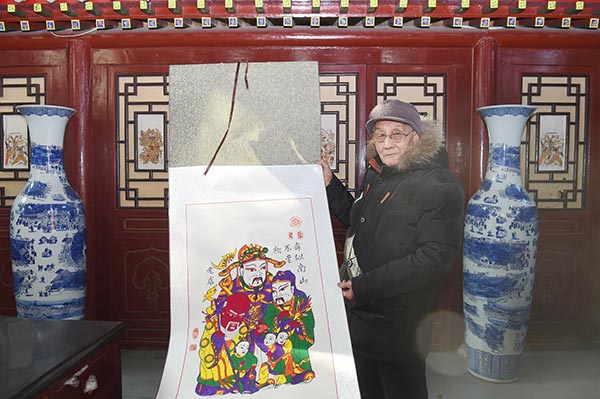 |
|
Guo shows one of the traditional New Year pictures. [Photo/China Daily] |
As a child apprentice who has become a national-level inheritor of his craft, Guo Taiyun's life has been associated with the ups and downs of the centuries-old Kaifeng woodblock printing.
The 91-year-old man has witnessed both the glorious days and the challenges faced in the modern times by the prints that once defined the Chinese Lunar New Year.
Starting in the Song Dynasty (960-1279), making and putting up such handmade pictures used to be an essential part of the Spring Festival celebrations. But with rapid changes in China in the past few decades, the tradition had gradually faded until recent attempts were made to revive it. It was listed as a national intangible cultural heritage in 2007.
Chinese tech giant Alibaba recently launched a crowdfunding project to help people inherit and promote such old crafts. Through it, craftsmen like Guo create works based on new designs, incorporating popular elements. When photos of the Spring Festival prints were uploaded online in January, they drew huge public interest.
So far, funds for woodblock printing have surpassed 50,000 yuan ($7,700). And the sponsors get benefits according to the donations they make, including pictures by Guo.
"I am so glad that it is catching public attention again," Guo says of the woodblock printing that is a cultural signature of Kaifeng, a city in Central China's Henan province.
Born to a poor family, Guo, who didn't go to school, joined a shop in Kaifeng that sold the prints as an apprentice at age 13, after his father died.
"I didn't starve and expected to make a living from it later," he says.